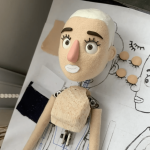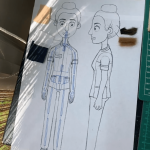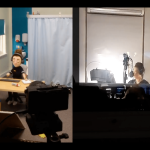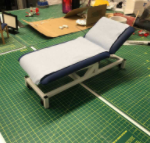
In collaboration with nurses, Chiesi have created a guide for digital patient consultations. Read on to hear Sarah’s experience during the COVID-19 pandemic and what led to the creation of this new resource.
I remember March 2020 like it was yesterday, suddenly, all face-to-face appointments had to be cancelled, just like that. It felt very alien not seeing patients, with the mass shut down due to COVID-19.
Despite this, we still had patients who needed reviewing for their long-term health conditions, so we had to act fast in this ever changing pandemic. We had to do something different and that was to go digital with our consultations, so patients weren’t missing out on the care they needed.
As a nurse, there is nothing like watching your asthma or COPD patient walk from the waiting room down to your room, it gives such a great picture of how they are managing their symptoms. Like everyone, we didn’t really have a lot of time for transition – this is happening and it’s starting now.
As the days went on, we realised that some patients were feeling isolated and lonely. Within the calls, all of our nursing team reflected back on how they’d hear the loneliness in the patient’s voice. Calls were lasting longer than required because sometimes we were the only person they had spoken to that week.
I thought long and hard:
- What can I do better?
- What can my team do better?
- Are we getting a true picture off a phone call?
- Are we getting the best out of these calls?
- Are we asking the right things?
From this, we worked out how we can get the best out of the call, starting by offering video calls to those who could use smart phones or laptops. We asked family members to support video calls if a patient couldn’t access this themselves.
This small change helped nurses and doctors massively, as you could physically see the patient and could see if they were using all their body to breathe and the rate at which they were breathing.
We continued to structure our reviews as if the patient were sat in the room with us. I often found patients had ordered their own blood pressure monitors and oxygen saturation machines, which meant I was able to get a picture to compare with last years’ results.
Digital consultations like this have become part of the future of nursing, and we have demonstrated that it can be done effectively this way and most patients have adapted well. Equally, we have to remember it is important to see patients face to face if necessary.
For example, if I’m ringing someone and they have had seven lots of antibiotics and seven lots of steroids in the last 12 months, I do physically need to see them, and consider some of the parts of assessment that cannot be done remotely:
- Have they lost weight?
- Have they had an x-ray?
- Do they need a bone density scan due to the amount of steroid use?
- Are they taking their inhaler?
- Have they got the correct technique?
I’ve worked with Chiesi to create the animation above, based on best practice with regards to digital consultations. Hopefully by sharing this approach with other healthcare professional colleagues, we can get it right.
My advice to any nurse is that you’ll get there. I absolutely hated technology, so much so that I felt I needed to go back to college to learn IT, but I got there, I did it and wow, I find it so useful.
We just need to focus on the structure of our calls, understand the best ways of interacting virtually, and make the most out of this new way of working. Good luck.
Take a look behind the scenes of the video:



 Sarah Rust
Sarah Rust 







